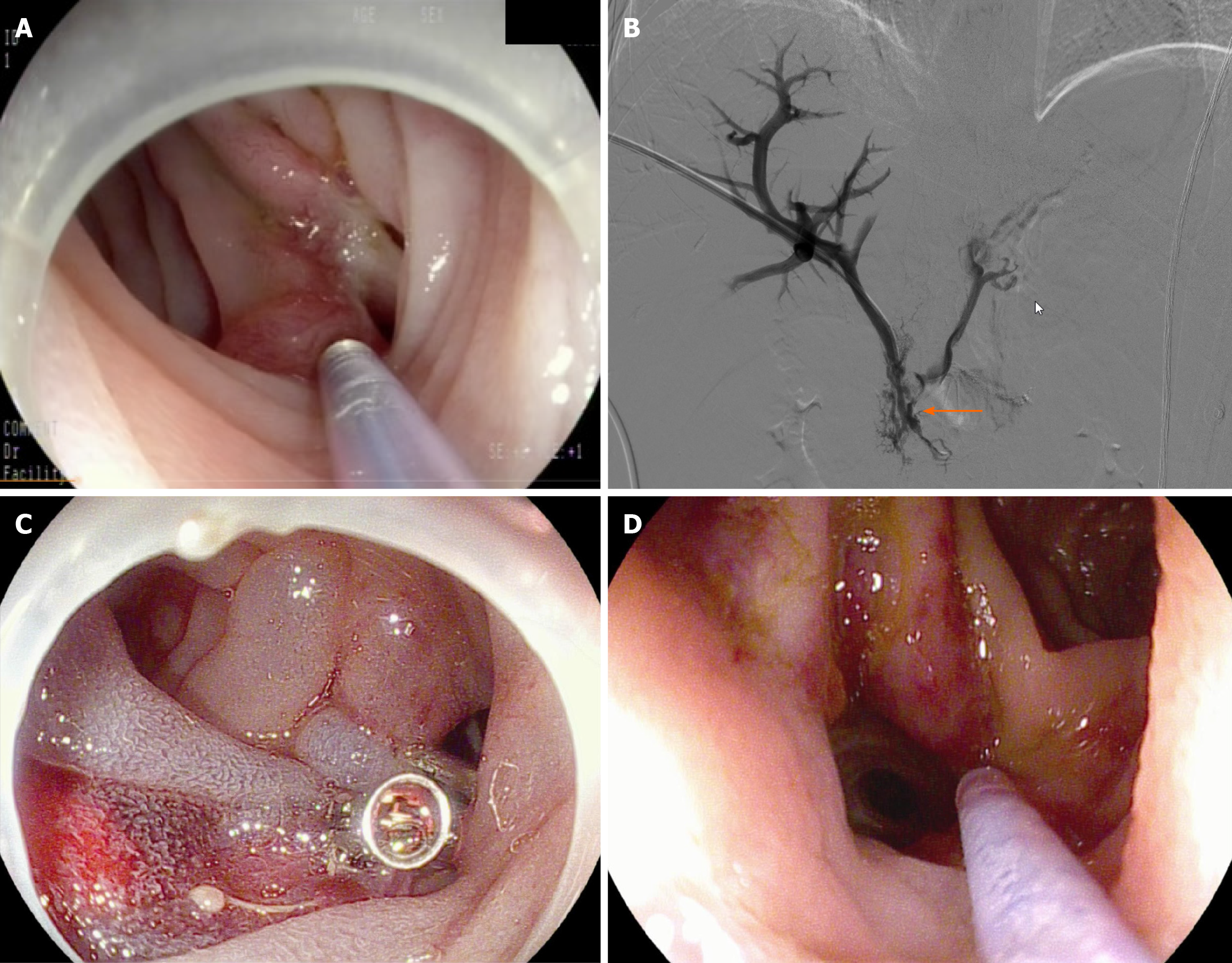Copyright
©The Author(s) 2024.
World J Gastroenterol. Apr 14, 2024; 30(14): 2059-2067
Published online Apr 14, 2024. doi: 10.3748/wjg.v30.i14.2059
Published online Apr 14, 2024. doi: 10.3748/wjg.v30.i14.2059
Figure 1 Emergency endoscopy confirmed the presence of numerous varicose veins before endoscopic sclerotherapy and was validated by endoscopic ultrasonography.
A: Emergency gastroscopy revealed tortuous dilated blood vessels around the choledochojejunostomy site (Case 1); B: A mucosal rupture was detected with spontaneous bleeding (Case 1); C: Endoscopic ultrasonography confirmed the presence of numerous varicose veins with abundant blood flow (Case 1); D: Emergency gastroscopy revealed a significant number of tortuous dilated varicose veins near the choledochojejunostomy site, along with several active bleedings. Hemostatic clips were used before endoscopic sclerotherapy (Case 2); E: Computed tomography showed prehepatic portal hypertension, suspicious tumor recurrence in the hepatic hilum area and the formation of varices around the choledochojejunostomy site (Case 3); F: Colonoscopy revealed three varicose veins visible with signs of erythema (Case 3); G: Thrombus head (arrow) was detected (Case 3); H: Spontaneous bleeding was observed at the site of varicose veins (Case 3).
Figure 2 Hemostatic clips were used to close off the bleeding points.
A: Injection sclerotherapy mixture of lauromacrogol/α-butyl cyanoacrylate (5.0/0.5 mL) (Case 1); B: Vascular angiography showed a patent portal vein, but a segment occlusion of the superior mesenteric vein with old mural thrombus (arrow) (Case 1); C: A combined injection of lauromacrogol/α-butyl cyanoacrylate (12/1 mL) was administered at the varicose veins (Case 2); D: Endoscopic sclerotherapy with lauromacrogol/α-butyl cyanoacrylate (30/3 mL) injection for jejunal varices were carried out immediately (Case 3).
Figure 3 Endoscopic re-examination confirmed no signs of bleeding after endoscopic sclerotherapy (Case 3).
A: Follow-up enhanced computed tomography revealed increased soft tissue density in the hepatic hilum, suggesting metastasis; B: Follow-up endoscopy revealed adhesive clumps and exudative ulcers near the choledochojejunostomy site, with no signs of bleeding observed.
- Citation: Liu J, Wang P, Wang LM, Guo J, Zhong N. Outcomes of endoscopic sclerotherapy for jejunal varices at the site of choledochojejunostomy (with video): Three case reports. World J Gastroenterol 2024; 30(14): 2059-2067
- URL: https://www.wjgnet.com/1007-9327/full/v30/i14/2059.htm
- DOI: https://dx.doi.org/10.3748/wjg.v30.i14.2059











